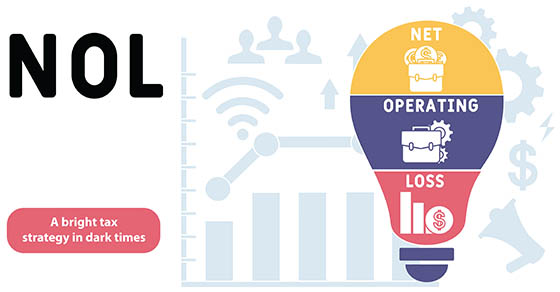Weekly Tax Brief
Digital assets and taxes: What you need to know
- Details
- Published: 29 May 2025 29 May 2025

As the use of digital assets like cryptocurrencies continues to grow, so does the IRS’s scrutiny of how taxpayers report these transactions on their federal income tax returns. The IRS has flagged this area as a key focus. To help you stay compliant and avoid tax-related complications, here are the basics of digital asset reporting.
The definition of digital assets
Digital assets are defined by the IRS as any digital representation of value that’s recorded on a cryptographically secured distributed ledger (also known as blockchain) or any similar technology. Common examples include:
- Cryptocurrencies, such as Bitcoin and Ethereum,
- Stablecoins, which are digital currencies tied to the value of a fiat currency like the U.S. dollar, and
- Non-fungible tokens (NFTs), which represent ownership of unique digital or physical items.
If an asset meets any of these criteria, the IRS classifies it as a digital asset.
Related question on your tax return
Near the top of your federal income tax return, there’s a question asking whether you received or disposed of any digital assets during the year. You must answer either “yes” or “no.”
When we prepare your return, we’ll check “yes” if, during the year, you:
- Received digital assets as compensation, rewards or awards,
- Acquired new digital assets through mining, staking or a blockchain fork,
- Sold or exchanged digital assets for other digital assets, property or services, or
- Disposed of digital assets in any way, including converting them to U.S. dollars.
We’ll answer “no” if you:
- Held digital assets in a wallet or exchange,
- Transferred digital assets between wallets or accounts you own, or
- Purchased digital assets with U.S. dollars.
Reporting the tax consequences of digital asset transactions
To determine the tax impact of your digital asset activity, you need to calculate the fair market value (FMV) of the asset in U.S. dollars at the time of each transaction. For example, if you purchased one Bitcoin at $93,429 on May 21, 2025, your cost basis for that Bitcoin would be $93,429.
Any transaction involving the sale or exchange of a digital asset may result in a taxable gain or loss. A gain occurs when the asset’s FMV at the time of sale exceeds your cost basis. A loss occurs when the FMV is lower than your basis. Gains are classified as either short-term or long-term, depending on whether you held the asset for more than a year.
Example: If you accepted one Bitcoin worth $80,000 plus $10,000 in cash for a car with a basis of $55,000, you’d report a taxable gain of $35,000. The holding period of the car determines whether this gain is short-term or long-term.
How businesses handle crypto payments
Digital asset transactions have their own tax rules for businesses. If you’re an employee and are paid in crypto, the FMV at the time of payment is treated as wages and subject to standard payroll taxes. These wages must be reported on Form W-2.
If you’re an independent contractor compensated with crypto, the FMV is reported as nonemployee compensation on Form 1099-NEC if payments exceed $600 for the year.
Crypto losses and the wash sale rule
Currently, the IRS treats digital assets as property, not securities. This distinction means the wash sale rule doesn’t apply to cryptocurrencies. If you sell a digital asset at a loss and buy it back soon after, you can still claim the loss on your taxes.
However, this rule does apply to crypto-related securities, such as stocks of cryptocurrency exchanges, which fall under the wash sale provisions.
Form 1099 for crypto transactions
Depending on how you interact with a digital asset, you may receive a:
- Form 1099-MISC,
- Form 1099-K,
- Form 1099-B, or
- Form 1099-DA.
These forms are also sent to the IRS, so it’s crucial that your reported figures match those on the form.
Evolving landscape
Digital asset tax rules can be complex and are evolving quickly. If you engage in digital asset transactions, maintain all related records — transaction dates, FMV data and cost basis. Contact us with questions. This will help ensure accurate and compliant reporting, minimizing your risk of IRS penalties.
© 2025
The IRS recently announced 2026 amounts for Health Savings Accounts
- Details
- Published: 28 May 2025 28 May 2025

The IRS recently released the 2026 inflation-adjusted amounts for Health Savings Accounts (HSAs). Employees will be able to save a modest amount more in their HSAs next year.
HSA basics
An HSA is a trust created or organized exclusively for the purpose of paying the “qualified medical expenses” of an “account beneficiary.” An HSA can only be established for the benefit of an “eligible individual” who is covered under a “high-deductible health plan” (HDHP). In addition, a participant can’t be enrolled in Medicare or have other health coverage (exceptions include dental, vision, long-term care, accident and specific disease insurance).
Within specified dollar limits, an above-the-line tax deduction is allowed for an individual’s contribution to an HSA. This annual contribution limitation and the annual deductible and out-of-pocket expenses under the tax code are adjusted annually for inflation.
Inflation adjustments for next year
In Revenue Procedure 2025-19, the IRS released the 2026 inflation-adjusted figures for contributions to HSAs. For calendar year 2026, the annual contribution limitation for an individual with self-only coverage under an HDHP will be $4,400. For an individual with family coverage, the amount will be $8,750. These are up from $4,300 and $8,550, respectively, in 2025.
There’s an additional $1,000 “catch-up” contribution amount for those age 55 or older in 2026 (and 2025).
An HDHP is generally a plan with an annual deductible that isn’t less than $1,700 for self-only coverage and $3,400 for family coverage in 2026 (up from $1,650 and $3,300, respectively, in 2025). In addition, in 2026, the sum of the annual deductible and other annual out-of-pocket expenses required to be paid under the plan for covered benefits (but not for premiums) can’t exceed $8,500 for self-only coverage and $17,000 for family coverage. In 2025, these amounts are $8,300 and $16,600, respectively.
Advantages of HSAs
There are a variety of benefits to HSAs. Contributions to the accounts are made on a pre-tax basis. The money can accumulate tax-free year after year and can be withdrawn tax-free to pay for a variety of medical expenses such as doctor visits, prescriptions, chiropractic care and premiums for long-term care insurance. In addition, an HSA is “portable” — it stays with an account holder if he or she changes employers or leaves the workforce. Contact us if you have questions about HSAs at your business.
© 2025
The tax rules for legal awards and settlements: What recipients should know
- Details
- Published: 13 May 2025 13 May 2025

If you’ve recently received a settlement or award from a lawsuit, or you’re expecting one, you may be wondering how the IRS views this money. Will you need to pay taxes on it? The short answer: It depends on the type of damages you received. Understanding the basic rules can help you avoid surprises.
Taxable vs. nontaxable awards
Not all lawsuit settlements or awards are treated the same under federal tax law. Generally, the IRS breaks them into two categories:
- Taxable. Awards for lost wages, lost profits, breach of contract and most punitive damages are taxable. For example, punitive damages and awards for unlawful discrimination or harassment are taxable. If you receive compensation for back pay or unpaid wages, the IRS treats it just like income you earn on the job. It’s subject to both income and employment taxes. Also taxable are damages for emotional distress without a physical injury.
- Nontaxable. Settlements for personal physical injuries or physical sickness are typically excluded from income, meaning you don’t owe taxes on them. However, the injury must be physical (such as a broken bone or illness), not emotional.
Special considerations and reporting rules
It’s important to recognize that even when part of a settlement is nontaxable, other parts might not be. For example, a case involving both physical injury and lost wages will likely result in mixed tax treatment.
Attorneys’ fees are another area that can trip recipients up. Even if your lawyer is paid directly out of your settlement, you’re generally taxed on the full amount before fees are deducted. This means you may owe tax on money you never actually receive.
Settlements related to emotional distress or defamation are taxable unless they’re tied to physical harm. And punitive damages are almost always taxable, regardless of the type of case.
Why professional help matters
Navigating the tax consequences of a lawsuit award can be tricky. In many cases, the settlement agreement will play a key role in determining how the IRS classifies the payment. How damages are described in the settlement can have an impact on your tax bill. For example, it’s helpful to specify which portion of a split settlement is for physical injuries versus emotional distress or lost wages. In negotiating a settlement, it may be possible to stipulate that an award is for physical injuries, rather than emotional, and thus is nontaxable.
Without professional guidance, you could miss opportunities to minimize your tax liability or, worse, end up underreporting income. We can help you:
- Review a settlement agreement for tax implications,
- Determine how much of your award is taxable,
- Understand when estimated tax payments might be necessary, and
- Ensure you report everything accurately on your tax return.
Final thoughts
While winning or settling a lawsuit or legal claim can bring financial relief, it can also bring tax complexities. Don’t assume that all settlement money is tax-free or that the IRS won’t notice. You want to stay compliant, avoid surprises and make the most of your award. Contact us if you’ve recently received a settlement, award or judgment or you’re expecting one.
© 2025
Can you turn business losses into tax relief?
- Details
- Published: 12 May 2025 12 May 2025

Even well-run companies experience down years. The federal tax code may allow a bright strategy to lighten the impact. Certain losses, within limits, may be used to reduce taxable income in later years.
Who qualifies?
The net operating loss (NOL) deduction levels the playing field between businesses with steady income and those with income that rises and falls. It lets businesses with fluctuating income to average their income and losses over the years and pay tax accordingly.
You may be eligible for the NOL deduction if your deductions for the tax year are greater than your income. The loss generally must be caused by deductions related to your:
- Business (Schedules C and F losses, or Schedule K-1 losses from partnerships or S corporations),
- Casualty and theft losses from a federally declared disaster, or
- Rental property (Schedule E).
The following generally aren’t allowed when determining your NOL:
- Capital losses that exceed capital gains,
- The exclusion for gains from the sale or exchange of qualified small business stock,
- Nonbusiness deductions that exceed nonbusiness income,
- The NOL deduction itself, and
- The Section 199A qualified business income deduction.
Individuals and C corporations are eligible to claim the NOL deduction. Partnerships and S corporations generally aren’t eligible, but partners and shareholders can use their separate shares of the business’s income and deductions to calculate individual NOLs.
What are the changes and limits?
Before the Tax Cuts and Jobs Act (TCJA), NOLs could be carried back two years, forward 20 years, and offset up to 100% of taxable income. The TCJA changed the landscape:
- Carrybacks are eliminated (except certain farm losses).
- Carryforwards are allowed indefinitely.
- The deduction is capped at 80% of taxable income for the year.
If an NOL carryforward exceeds your taxable income of the target year, the unused balance may become an NOL carryover. Multiple NOLs must be applied in the order they were incurred.
What’s the excess business loss limitation?
The TCJA established an “excess business loss” limitation, which took effect in 2021. For partnerships and S corporations, this limitation is applied at the partner or shareholder level, after the outside basis, at-risk and passive activity loss limitations have been applied.
Under the rule, noncorporate taxpayers’ business losses can offset only business-related income or gain, plus an inflation-adjusted threshold. For 2025, that threshold is $313,000 ($626,000 if married filing jointly). Remaining losses are treated as an NOL carryforward to the next tax year. In other words, you can’t fully deduct them because they become subject to the 80% income limitation on NOLs, reducing their tax value.
Important: Under the Inflation Reduction Act, the excess business loss limitation applies to tax years through 2028. Under the TCJA, it had been scheduled to expire after December 31, 2026.
Plan proactively
Navigating NOLs and the related restrictions is complex, especially when coordinating with other deductions and credits. Thoughtful planning can maximize the benefit of past losses. Please consult with us about how to proceed in your situation.
© 2025
Discover if you qualify for “head of household” tax filing status
- Details
- Published: 01 April 2025 01 April 2025

When we prepare your tax return, we’ll check one of the following filing statuses: single, married filing jointly, married filing separately, head of household or qualifying widow(er). Only some people are eligible to file a return as a head of household. But if you’re one of them, it’s more favorable than filing as a single taxpayer.
To illustrate, the 2025 standard deduction for a single taxpayer is $15,000. However, it’s $22,500 for a head of household taxpayer. To be eligible, you must maintain a household that, for more than half the year, is the principal home of a “qualifying child” or other relative of yours whom you can claim as a dependent.
Tax law fundamentals
Who’s a qualifying child? This is one who:
- Lives in your home for more than half the year,
- Is your child, stepchild, adopted child, foster child, sibling, stepsibling (or a descendant of any of these),
- Is under age 19 (or a student under 24), and
- Doesn’t provide over half of his or her own support for the year.
If the parents are divorced, the child will qualify if he or she meets these tests for the custodial parent — even if that parent released his or her right to a dependency exemption for the child to the noncustodial parent.
Can both parents claim head of household status if they live together but aren’t married? According to the IRS, the answer is no. Only one parent can claim head of household status for a qualifying child. A person can’t be a “qualifying child” if he or she is married and can file a joint tax return with a spouse. Special “tie-breaker” rules apply if the individual can be a qualifying child of more than one taxpayer.
The IRS considers you to “maintain a household” if you live in the home for the tax year and pay over half the cost of running it. In measuring the cost, include house-related expenses incurred for the mutual benefit of household members, including property taxes, mortgage interest, rent, utilities, insurance on the property, repairs and upkeep, and food consumed in the home. Don’t include medical care, clothing, education, life insurance or transportation.
Providing your parent a home
Under a special rule, you can qualify as head of household if you maintain a home for your parent even if you don’t live with him or her. To qualify under this rule, you must be able to claim the parent as your dependent.
You can’t be married
You must be single to claim head of household status. Suppose you’re unmarried because you’re widowed. In that case, you can use the married filing jointly rates as a “surviving spouse” for two years after the year of your spouse’s death if your dependent child, stepchild, adopted child or foster child lives with you and you maintain the household. The joint rates are more favorable than the head of household rates.
If you’re married, you must file jointly or separately — not as head of household. However, if you’ve lived apart from your spouse for the last six months of the year and your dependent child, stepchild, adopted child, or foster child lives with you and you “maintain the household,” you’re treated as unmarried. If this is the case, you can qualify as head of household.
Contact us. We can answer questions about your situation.
© 2025
Are you a tax-favored real estate professional?
- Details
- Published: 29 March 2025 29 March 2025

For federal income tax purposes, the general rule is that rental real estate losses are passive activity losses (PALs). An individual taxpayer can generally deduct PALs only to the extent of passive income from other sources, if any. For example, if you have positive taxable income from other rental properties, that generally counts as passive income. You can use PALs to offset passive income from other sources, which amounts to being able to currently deduct them.
Unfortunately, many rental property owners have little or no passive income in most years. Excess rental real estate PALs for the year (PALs that you cannot currently deduct because you don’t have enough passive income) are suspended and carried forward to future years. You can deduct suspended PALs when you finally have enough passive income or when you sell the properties that generated the PALs.
Exception for professionals
Thankfully, there’s a big exception to the general rule that you must have positive passive income to currently deduct rental losses. If you qualify for the exception, a rental real estate loss can be classified as a non-passive loss that can usually be deducted currently.
This exception allows qualifying individual taxpayers to currently deduct rental losses even if they have no passive income. To be eligible for the real estate professional exception:
- You must spend more than 750 hours during the year delivering personal services in real estate activities in which you materially participate, and
- Those hours must be more than half the time you spend delivering personal services (in other words, working) during the year.
If you can clear these hurdles, you qualify as a real estate professional. The next step is determining if you have one or more rental properties in which you materially participate. If you do, losses from those properties are treated as non-passive losses that you can generally deduct in the current year. Here’s how to pass the three easiest material participation tests for a rental real estate activity:
- Spend more than 500 hours on the activity during the year.
- Spend more than 100 hours on the activity during the year and make sure no other individual spends more time than you.
- Make sure the time you spend on the activity during the year constitutes substantially all the time spent by all individuals.
If you don’t qualify
Obviously, not everyone can pass the tests to be a real estate professional. Thankfully, some other exceptions may potentially allow you to treat rental real estate losses as currently deductible non-passive losses. These include the:
Small landlord exception. If you qualify for this exception, you can treat up to $25,000 of rental real estate loses as non-passive. You must own at least 10% of the property generating the loss and actively participate with respect to that property. Properties owned via limited partnerships don’t qualify for this exception. To pass the active participation test, you don’t need to do anything more than exercise management control over the property in question. This could include approving tenants and leases or authorizing maintenance and repairs. Be aware that this exception is phased out between adjusted gross incomes (AGIs) of $100,000 and $150,000.
Seven-day average rental period exception. When the average rental period for a property is seven days or less, the activity is treated as a business activity. If you can pass one of the material participation tests, losses from the activity are non-passive.
30-day average rental period exception. The activity is treated as a business activity when the average rental period for a property is 30 days or less and significant personal services are provided to customers by or on behalf of you as the property owner. If you can pass one of the material participation tests, losses from the activity are non-passive.
Utilize all tax breaks
As you can see, various taxpayer-friendly rules apply to owners of rental real estate, including the exceptions to the PAL rules covered here. We can help you take advantage of all available rental real estate tax breaks.
© 2025
6 essential tips for small business payroll tax compliance
- Details
- Published: 25 March 2025 25 March 2025

Staying compliant with payroll tax laws is crucial for small businesses. Mistakes can lead to fines, strained employee relationships and even legal consequences. Below are six quick tips to help you stay on track.
1. Maintain organized records
Accurate recordkeeping is the backbone of payroll tax compliance. Track the hours worked, wages paid and all taxes withheld. Organizing your documentation makes it easier to verify that you’re withholding and remitting the correct amounts. If you ever face an IRS or state tax inquiry, having clear, detailed records will save time and reduce stress.
2. Understand federal withholding
- Federal income tax. Employees complete Form W-4 so you can determine how much federal income tax to withhold. The amounts can be calculated using IRS tax tables.
- FICA taxes (Social Security and Medicare). Your business is responsible for withholding a set percentage from each employee’s wages for Social Security and Medicare, and you must match that amount as an employer. The current tax rate for Social Security is 6.2% for the employer and 6.2% for the employee (12.4% total). Taxpayers only pay Social Security tax up to a wage base limit. For 2025, the wage base limit is $176,100. The current rate for Medicare tax is 1.45% for the employer and 1.45% for the employee (2.9% total). There’s no wage base limit for Medicare tax. All wages are subject to it.
3. Don’t overlook employer contributions
Depending on your state and industry, you may need to contribute additional taxes beyond those withheld from employee paychecks.
- Federal Unemployment Tax Act (FUTA) tax. Employers pay FUTA tax to fund unemployment benefits.
- State unemployment insurance. Requirements vary by state, so consult your state’s labor department for details. You can also find more resources at the U.S. Department of Labor.
4. Adhere to filing and deposit deadlines
- Deposit schedules. Your deposit frequency for federal taxes (monthly or semi-weekly) depends on the total amount of taxes withheld. Missing a deadline can lead to penalties and interest charges.
- Quarterly and annual filings. You must submit forms like the 941 (filed quarterly) and the 940 (filed annually for FUTA tax) on time, with any tax due.
Under the Trust Fund Recovery Penalty, a “responsible person” who willfully fails to withhold or deposit employment taxes can be held personally liable for a steep penalty. The penalty is equal to the full amount of the unpaid trust fund tax, plus interest. For this purpose, a responsible person can be an owner, officer, partner or employee with authority over the funds of the business.
5. Stay current with regulatory changes
Tax laws are never static. The IRS and state agencies update requirements frequently, and new legislation can introduce additional obligations. A proactive approach helps you adjust payroll systems or processes in anticipation of changes, rather than scrambling at the last minute.
6. Seek professional advice
No matter how meticulous your business is, payroll taxes can be complex. We can provide guidance specific to your industry and location. We can help you select the right payroll system, calculate employee tax withholding, navigate multi-state filing requirements and more. In short, we can help ensure that every aspect of your payroll is set up correctly.
© 2025
Turning stock downturns into tax advantages
- Details
- Published: 20 March 2025 20 March 2025

Have you ever invested in a company only to see its stock value plummet? (This may become relevant in light of recent market volatility.) While such an investment might be something you’d rather forget, there’s a silver lining: you can claim a capital loss deduction on your tax return. Here are the rules when a stock you own is sold at a loss or is entirely worthless.
How capital losses work
As capital assets, stocks produce capital gains or losses when they’re sold. Your capital gains and losses for the year must be netted against one another in a specific order based on whether they’re short-term (held one year or less) or long-term (held for more than one year).
If, after netting, you have short-term or long-term losses (or both), you can use them to offset up to $3,000 of ordinary income ($1,500 for married taxpayers filing separately). Any loss in excess of this limit is carried forward to later years until all of it is either offset against capital gains or deducted against ordinary income in those years, subject to the $3,000 limit. If you have both net short-term and net long-term losses, the net short-term losses are used to offset ordinary income before the net long-term losses.
If you’ve realized capital gains from stock or other asset sales during the year, consider selling some of your losing positions to offset the gains. A good tax strategy is to sell enough losing stock to shelter your earlier gains and generate a $3,000 loss since this is the maximum loss that can be used to offset ordinary income each year.
Implications of the wash sale rule
If you believe that a stock you own will recover but want to sell now to lock in a tax loss, be aware of the wash sale rule. Under it, if you sell stock at a loss and buy substantially identical stock within the 30-day period before or after the sale date, you can’t claim the loss for tax purposes. In order to claim the loss, you must buy the new shares outside of the period that begins 30 days before and ends 30 days after the sale of the loss stock.
When stock is worth nothing
In some cases, a stock you own may have become completely worthless. If so, you can claim a loss equal to your basis in the stock, which is generally what you paid for it. The stock is treated as though it had been sold on the last day of the tax year. This date is important because it affects whether your capital loss is short-term or long-term.
Stock shares become worthless when they have no liquidation value. That’s because the corporation’s liabilities exceed its assets and have no potential value and the business has no reasonable hope of becoming profitable. A stock can be worthless even if the corporation hasn’t declared bankruptcy. Conversely, a stock may still have value even after a bankruptcy filing, if the corporation continues operating and the stock continues trading.
You may not discover that a stock has become worthless until after you’ve filed your tax return for the year of worthlessness. In that case, you can amend your return for that year to claim a credit or refund due to the loss. You can do this for seven years from the date your original return was due, or two years from the date you paid the tax, whichever is later.
Maximize the tax benefits
As you can see, deducting stock losses or worthless stock on your tax return can be complex. Therefore, it’s important to maintain thorough documentation. We can help maximize the benefits. Keep in mind that other rules may apply. Let us know if you have any questions.
© 2025
Planning for the future: 5 business succession options and their tax implications
- Details
- Published: 18 March 2025 18 March 2025

When it’s time to consider your business’s future, succession planning can protect your legacy and successfully set up the next generation of leaders or owners. Whether you’re ready to retire, you wish to step back your involvement or you want a solid contingency plan should you unexpectedly be unable to run the business, exploring different succession strategies is key. Here are five options to consider, along with some of the tax implications.
1. Transfer directly to family with a sale or gifts
One of the most common approaches to succession is transferring ownership to a family member (or members). This can be done by gifting interests, selling interests or a combination. Parents often pass the business to children, but family succession plans can also involve siblings or other relatives.
Tax implications:
Gift tax considerations. You may trigger the federal gift tax if you gift the business (or part of it) to a family member or if you sell it to him or her for less than its fair market value. The annual gift tax exclusion (currently $19,000 per recipient) can help mitigate or avoid immediate gift tax in small, incremental transfers. Plus, every individual has a lifetime gift tax exemption. So depending on the value of the business and your use of the exemption, you might not owe gift taxes on the transfer. Keep in mind that when gifting partial interests in a closely held business, discounts for lack of marketability or control may be appropriate and help reduce gift taxes.
Estate planning. If the owner dies before transferring the business, there may be estate tax implications. Proper planning can help minimize estate tax liabilities through trusts or other estate planning tools.
Capital gains tax. If you sell the business to family members, you could owe capital gains tax. (See “5. Sell to an outside buyer” for more information.)
2. Transfer ownership through a trust
Suppose you want to keep long-term control of the business within your family. In that case, you might place ownership interests in a trust (such as a grantor-retained annuity trust or another specialized vehicle).
Tax implications:
Estate and gift tax mitigation. Properly structured trusts can help transfer assets to the next generation with minimized gift and estate tax exposure. Trust-based strategies can be particularly effective for business owners with significant assets.
Complex legal framework. Because trusts involve legal documents and strict rules, working with us and an attorney is crucial to ensure compliance and optimize tax benefits.
3. Engage in an employee or management buyout
Another option is to sell to a group of key employees or current managers. This path often ensures business continuity because the new owners already understand the business and its culture.
Tax implications:
Financing arrangements. In many cases, employees or managers may not have the funds to buy the business outright. Often, the seller finances part of the transaction. While this can provide ongoing income for the departing owner, interest on installment payments has tax consequences for both parties.
Deferred payments. Spreading payments over time can soften your overall tax burden by distributing capital gains across multiple years, which might help you avoid being subject to top tax rates or the net investment income tax. But each payment received is still taxed.
4. Establish an Employee Stock Ownership Plan (ESOP)
An ESOP is a qualified retirement plan created primarily to own your company’s stock, and thus it allows employees to own shares in the business. It may be an appealing choice for owners interested in rewarding and retaining staff. However, administering an ESOP involves complex rules.
Tax implications:
Owner benefits. Selling to an ESOP can offer potential tax deferrals, especially if the company is structured as a C corporation and the transaction meets specific requirements.
Corporate deductions. Contributions to an ESOP are usually tax-deductible, which can reduce the company’s taxable income.
5. Sell to an outside buyer
Sometimes, the best fit is outside the family or current employees or management team. You might decide to sell to an external buyer — for example, a competitor or private equity group. If you can find the right buyer, you may even be able to sell the business at a premium.
If your business is structured as a corporation, you may sell the business’s assets or the stock. Sellers generally prefer stock (or ownership interest) sales because they minimize the tax bill from a sale.
Tax implications:
Capital gains tax. Business owners typically pay capital gains tax on the difference between their original investment in the business (their “basis”) and the sale price. The capital gains rate depends in part on how long you’ve held the business. Usually, if you’ve owned it for more than one year, you’re taxed at the applicable long-term capital gains rate.
Allocation of purchase price. If you sell the assets, you and the buyer must decide how to allocate the purchase price among assets (including equipment and intellectual property). This allocation affects tax liabilities for both parties.
Focus on your unique situation
Succession planning isn’t a one-size-fits-all process. Each option has unique benefits and pitfalls, especially regarding taxes. The best approach for you depends on factors including your retirement timeline, personal financial goals and family or employee involvement. Consult with us to ensure you choose a path that preserves your financial well-being and protects the business. We can advise on tax implications and work with you and your attorney to structure the deal advantageously. After all, a clear succession plan can safeguard the company you worked hard to build.
© 2025
Riding the tax break train: Maximizing employee transportation fringe benefits
- Details
- Published: 13 March 2025 13 March 2025

There are some nice tax breaks for transportation-related employee fringe benefits. If your employer offers these tax-favored fringes, you should probably take advantage of them by signing up. Here’s a quick summary of the current federal tax treatment of transportation-related benefits.
Mass transit passes
For 2025, employer-provided mass transit passes for train, subway and bus systems are tax-free to a recipient employee up to a monthly limit of $325. Thanks to an unfavorable change in the 2017 Tax Cuts and Jobs Act (TCJA), your company can’t deduct the cost of this benefit. However, your company may offer a salary-reduction arrangement that allows you to set aside up to $325 per month from your salary to pay for transit passes with your own money. That way, you pay for the passes with before-tax dollars.
For example, let’s say you set aside the maximum $325 per month to pay for train passes. If you’re in the 24% federal income tax bracket, you could save $993 a year in federal income and Medicare taxes. If Social Security tax is being withheld from your paychecks, you could save $1,235.
Parking allowances
For 2025, employer-provided parking allowances are also tax-free up to a monthly limit of $325. You can be given this fringe on top of the tax-free $325 a month for transit passes. For example, you can get $325 per month to pay for the train, plus another $325 to pay the park-and-ride fee at the station. Or you can simply drive to work and get $325 in tax-free bucks to help cover parking near your office or worksite.
Van pooling
For 2025, an employer can provide employees with tax-free transportation of up to $325 per month in a commuter highway vehicle if the transportation is for travel between employee residences and the workplace. This arrangement is often called van pooling.
To be a commuter highway vehicle, the vehicle must meet the following conditions:
- It has a seating capacity of at least six adults (not including the driver),
- At least 80% of the mileage is reasonably expected to be for transporting employees between their residences and their workplace, and
- It’s used for such trips during which the number of employees transported is at least 50% of the adult seating capacity (not including the driver).
Your company cannot deduct the cost of this benefit. But as explained earlier, the company may offer a salary-reduction arrangement that allows you to set aside up to $325 per month to cover van pooling. That way, you pay with before-tax dollars, which will cut your tax bill.
Job-related moving expenses
Your company may give employees allowances to cover job-related relocation expenses. Through 2025, the TCJA generally doesn’t allow tax-free treatment for these allowances. The exception is when the employee is on active duty as a member of the U.S. Armed Forces and the move is pursuant to a military order involving a permanent change of station.
Hopefully, your company still provides this benefit because it can deduct the cost. If so, you come out ahead even though whatever the company pays to cover moving expenses is treated as additional taxable salary. Getting a taxable benefit is better than getting no benefit at all!
Save money, ease stress
If your company pays for these tax-free transportation-related fringe benefits, you should strongly consider signing up. Saving on commuting costs can make your trips to work less stressful. Contact us if you have questions about these benefits or want more information.
© 2025





